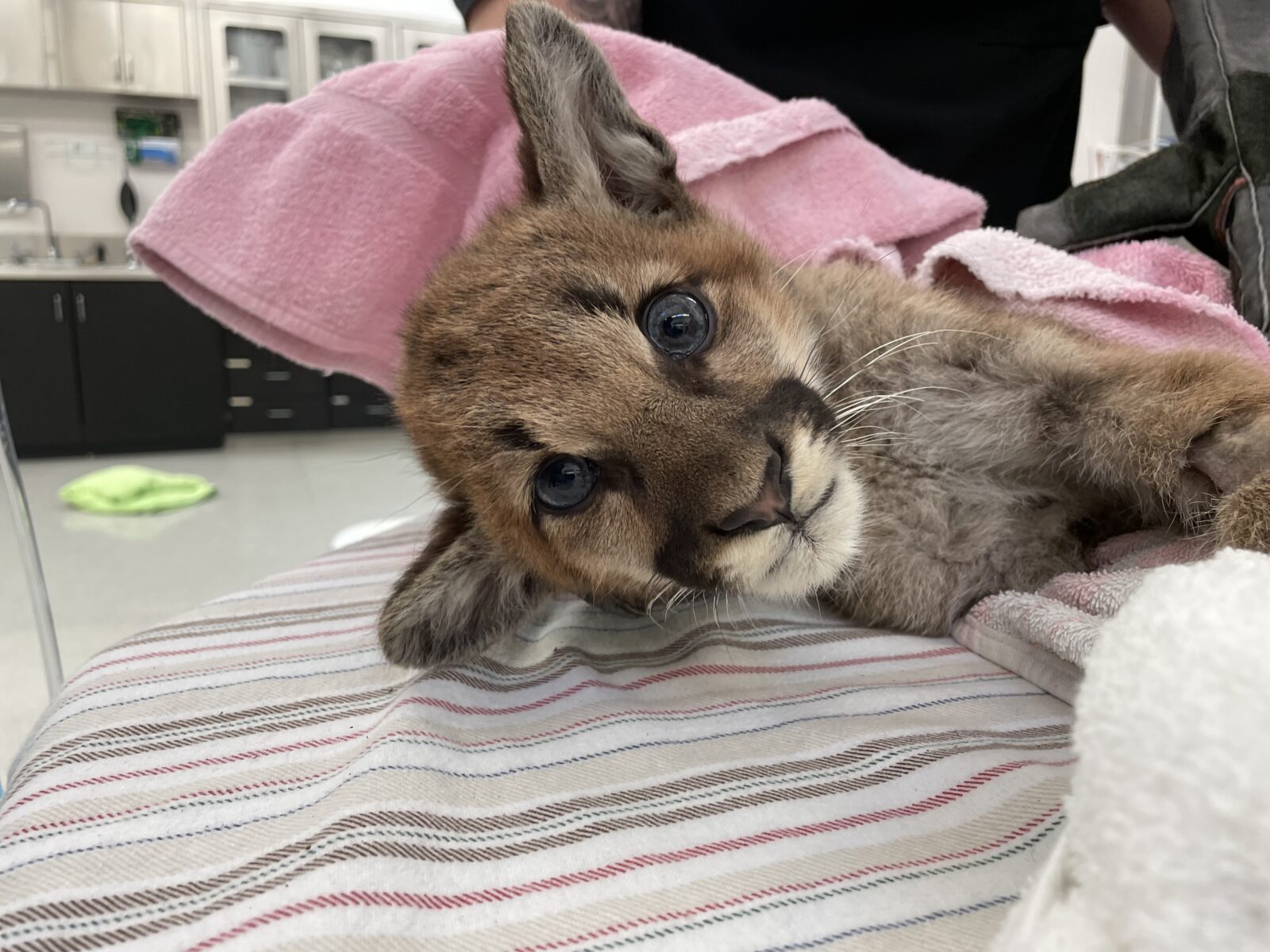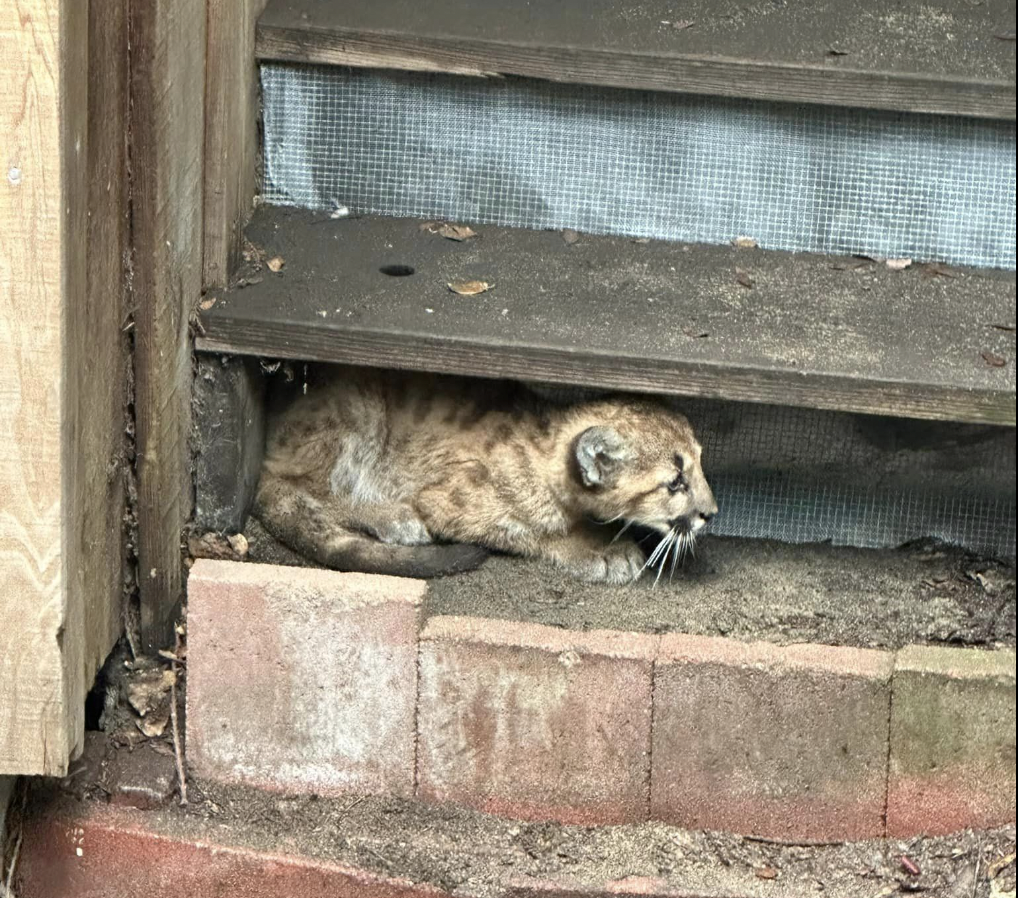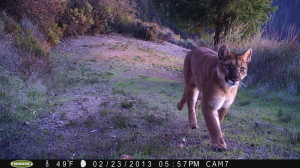On a crisp morning in late December 2022, Michael Gerson spotted a furry, speckled mountain lion cub, barely bigger than a housecat, tucked against the deck steps at his home in the Santa Cruz Mountains. He reached out to the nonprofit Bay Area Puma Project, which advised him to leave it: Mom was probably out hunting and would likely come back. But out of caution, and feeling some Facebook peer pressure, Gerson called the California Department of Fish and Wildlife.
A team arrived the next day. The cub, they thought, seemed in poor condition, and a storm was coming. Leaving it risked a preventable death. They decided to remove the cub from the wild, and place it in the care of the Oakland Zoo. It was the second of three cubs rescued within two months; the agency usually rescues three or four a year. Zoo officials say such cubs are almost always malnourished and very sick.
/news
But the second night, an adult mountain lion appeared again in Gerson’s yard. Soon after learning of the mother’s return, CDFW officials decided to put the cub back where they found it. It was risky. Mountain lion moms have rarely been spotted after cub rescues; the only other attempt CDFW had made was a failure.
This time, it worked. The next night, security cameras caught video of the returned cub following closely behind his mother as the pair left the area.
To CDFW, the reunion was a groundbreaking success—the first documented successful reunification of a cub with its mother, according to senior wildlife veterinarian Deana Clifford.
But residents like Gerson saw it differently. They felt CDFW should never have removed the cub from the wild in the first place. “I wouldn’t fault them for what they did,” Gerson says, but he also adds that “the rescue felt more like a kidnapping.”
In retrospect, he says, he should not have allowed word of the cub on his property to reach social media. On Facebook, tempers flared quickly as neighbors argued over what should be done about the cub, as though deciding between black or white. But decisions about mountain lions in California are rarely without nuance, and this situation was no different.

A balance of responsibilities
It’s CDFW’s job to ensure that California’s estimated 4,000–6,000 mountain lions (aka pumas, or cougars) can coexist with people as harmoniously as possible, explains Clifford, the CDFW vet. The agency leads efforts to conserve the species—but it also responds to calls about injured or dead mountain lions, removes mountain lions if they present an obvious danger to humans, and decides if a mountain lion cub needs to be removed from the wild for its own safety.
Zara McDonald, president and director of the Bay Area Puma Project, had advised Gerson not to call CDFW “because they’ll come and take it right away,” she says. In McDonald’s opinion, CDFW has often removed cubs from the wild without giving the mother enough time to return, which could further harm a potentially endangered population. “Fish and Wildlife [human-wildlife] conflict specialists are not puma specialists,” she says. “I think they react too quickly.”
But CDFW’s Clifford says in most cases, “there is no evidence of a mother both prior to the cub being rescued and after.”
Mountain lion cubs depend on their mothers for food, warmth and protection during their first several months. The longer a young cub is alone, the less chance it has of surviving. Mothers usually don’t leave cubs for long, Clifford says. When a cub is two to three months old, like the cub Gerson found, “mom should be checking on them every day.”
The goal is always to leave the cub in the wild, Clifford says; the decision is a balance. “We either know it’s orphaned, because we have some solid evidence, or the cat is so sick there’s just no way” it will live.

A tale of capture and release
Gerson’s next-door neighbor, Lorie Steel, has a security camera pointed away from her house that regularly records local wildlife. Indeed, the night before Gerson found the cub, the camera recorded an adult mountain lion strolling in and out of view—presumably the cub’s mother.
CDFW officials say they were unaware an adult had been seen in the area so recently when they made the call to remove the cub. Clifford didn’t visit the cub herself, but was told by the responding biologist and wildlife officers that the cub appeared thin and had diarrhea. “I thought, that is not a cat that is doing very well right now,” Clifford says. That information, coupled with the nasty forecast, led her to believe it wouldn’t be wise to leave the cub there. Clifford and her team made the call to pull the cub out of the wild.
Before they took the cub away, the responding CDFW officials placed cameras on Gerson’s property to monitor for signs of the cub’s mother, just in case.
The wildlife hospital at the Oakland Zoo has treated more than 20 mountain lions since 2017. When this cub arrived, “he was dehydrated, and a little bit thin, but certainly in much better shape than most of the cubs that we see,” says head veterinarian Alex Herman.
Two days later, on the morning of Jan. 1, 2023, Steel woke up, poured herself some coffee, and sat down to watch the previous night’s camera feed. “And then I just started crying.” At around 4:10 a.m., her cameras recorded an adult mountain lion walking across her property as it let out a piercing cry. “There’s mom out looking for the baby,” she thought. She sent the video to McDonald, the Bay Area Puma Project director, who immediately updated CDFW and the Oakland Zoo. After an hour or so of phone calls, the zoo’s veterinary team confirmed with CDFW that the cub was healthy enough to return to the wild.
By noon that day, after two nights at the zoo, the cub was on its way back to Gerson’s property.
At 1:30 a.m. on Jan. 2, 2023, Steel heard the keening again. In the darkness, she crept to her sliding door, from where she had previously seen the mountain lion. “Sure enough, 10 minutes after I heard all the calling, mom and baby went strolling by and were reunited,” she says. “I was crying all over again.”





-300x221.jpg)